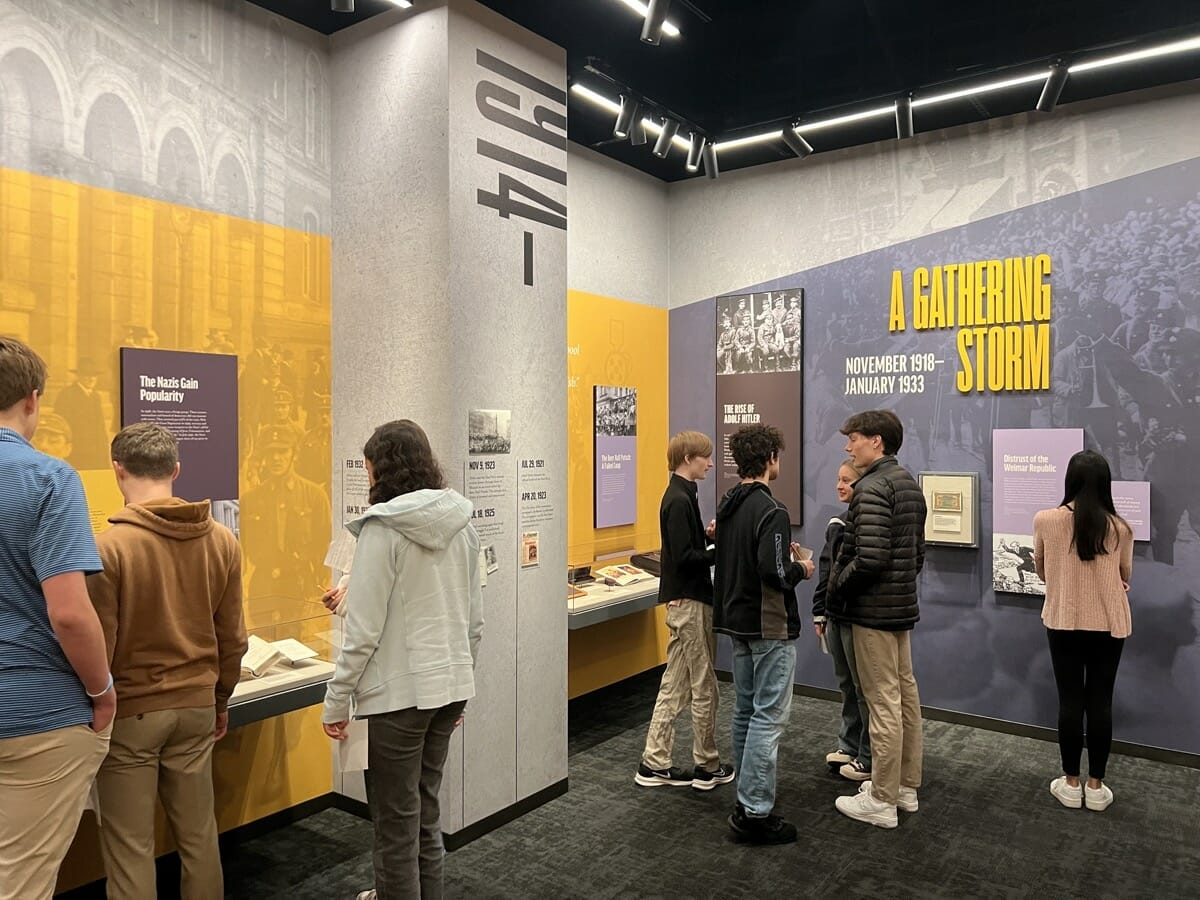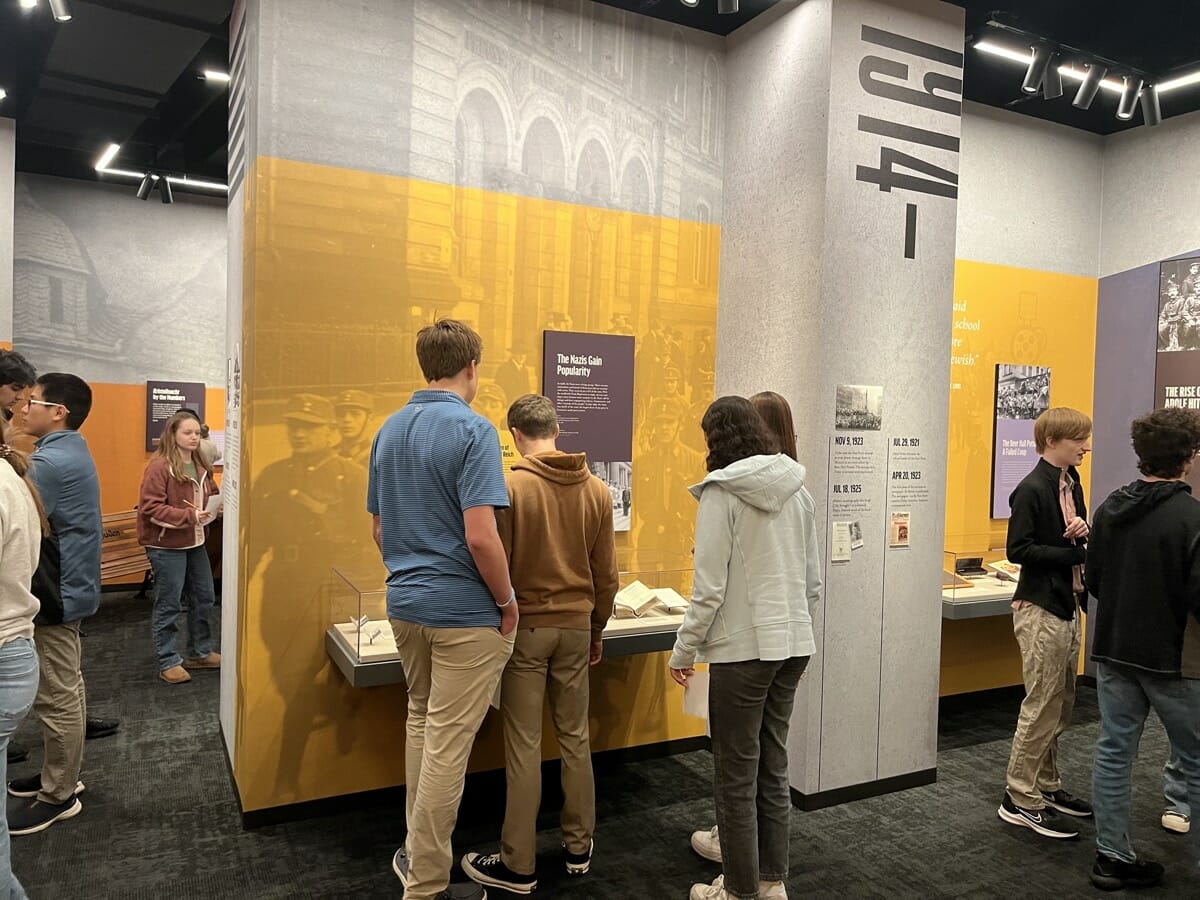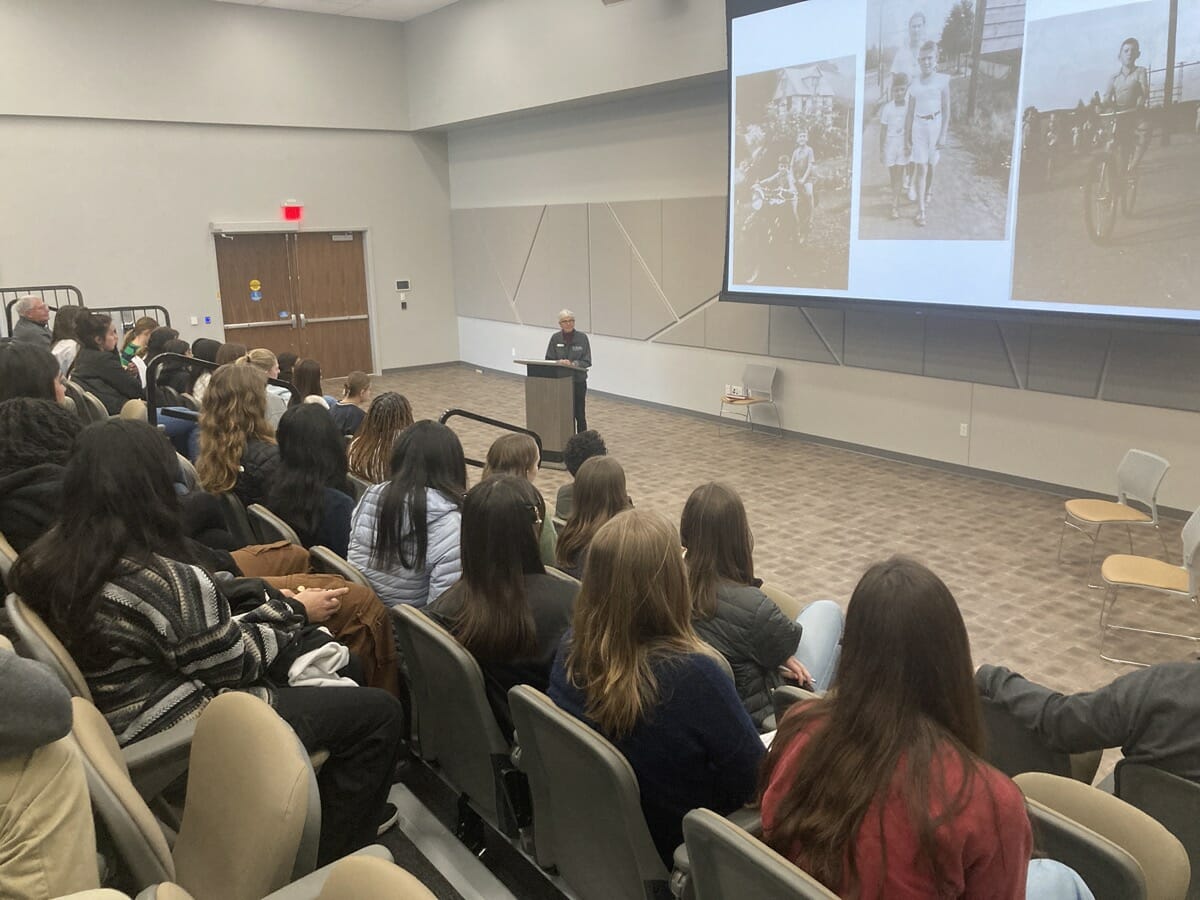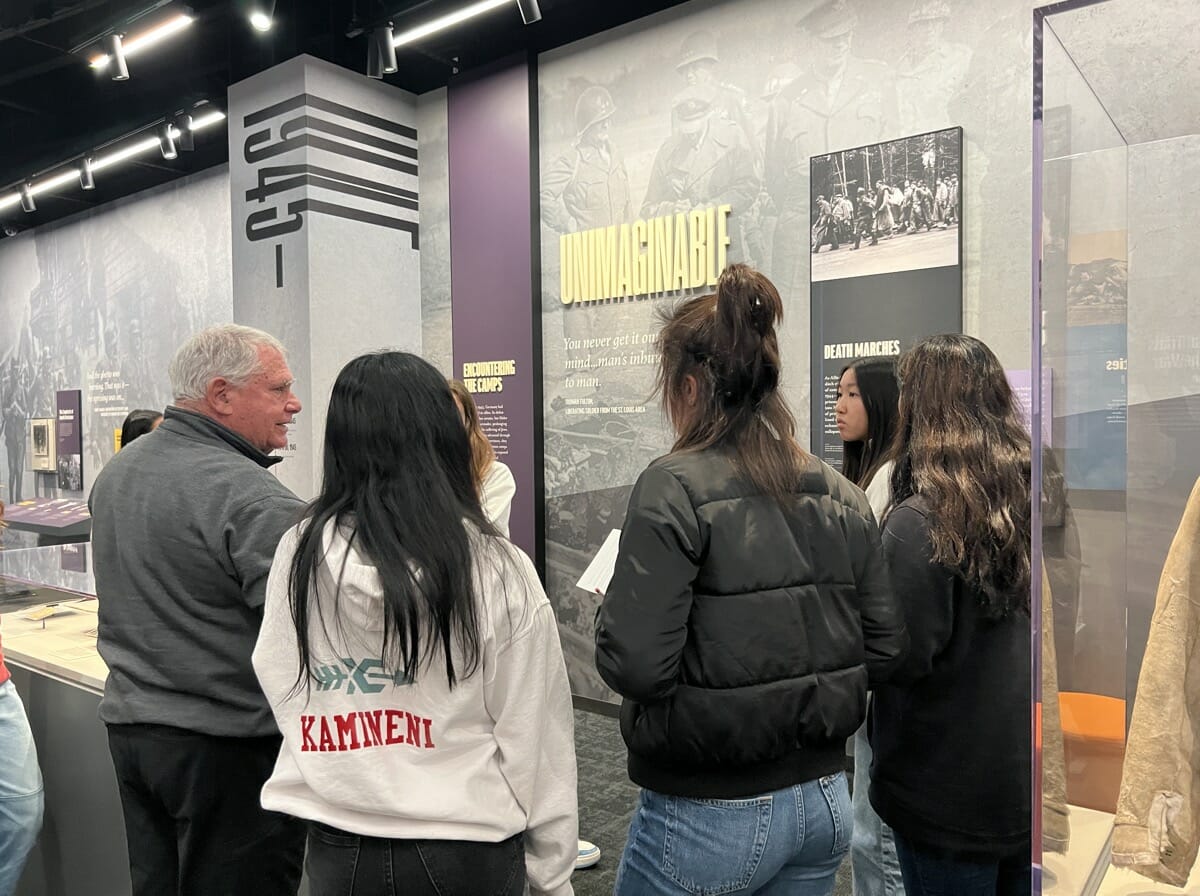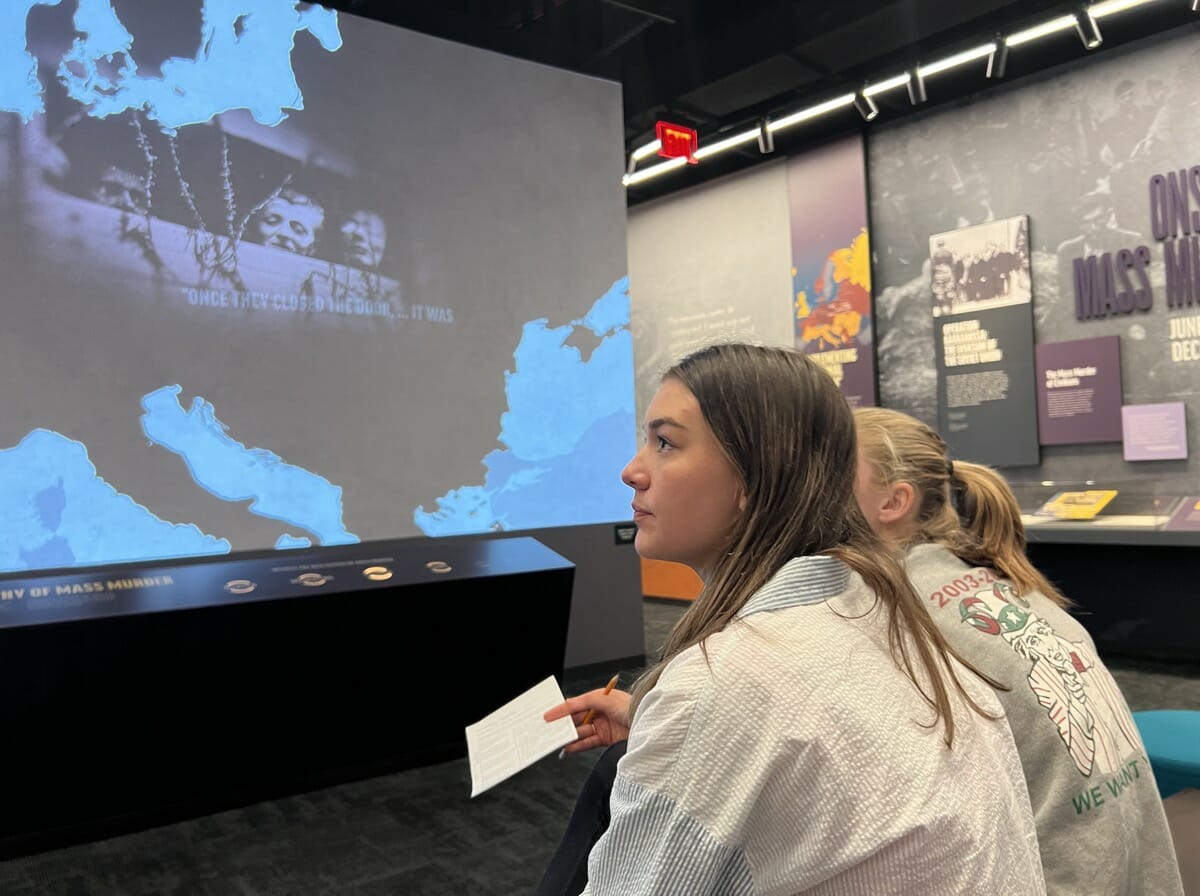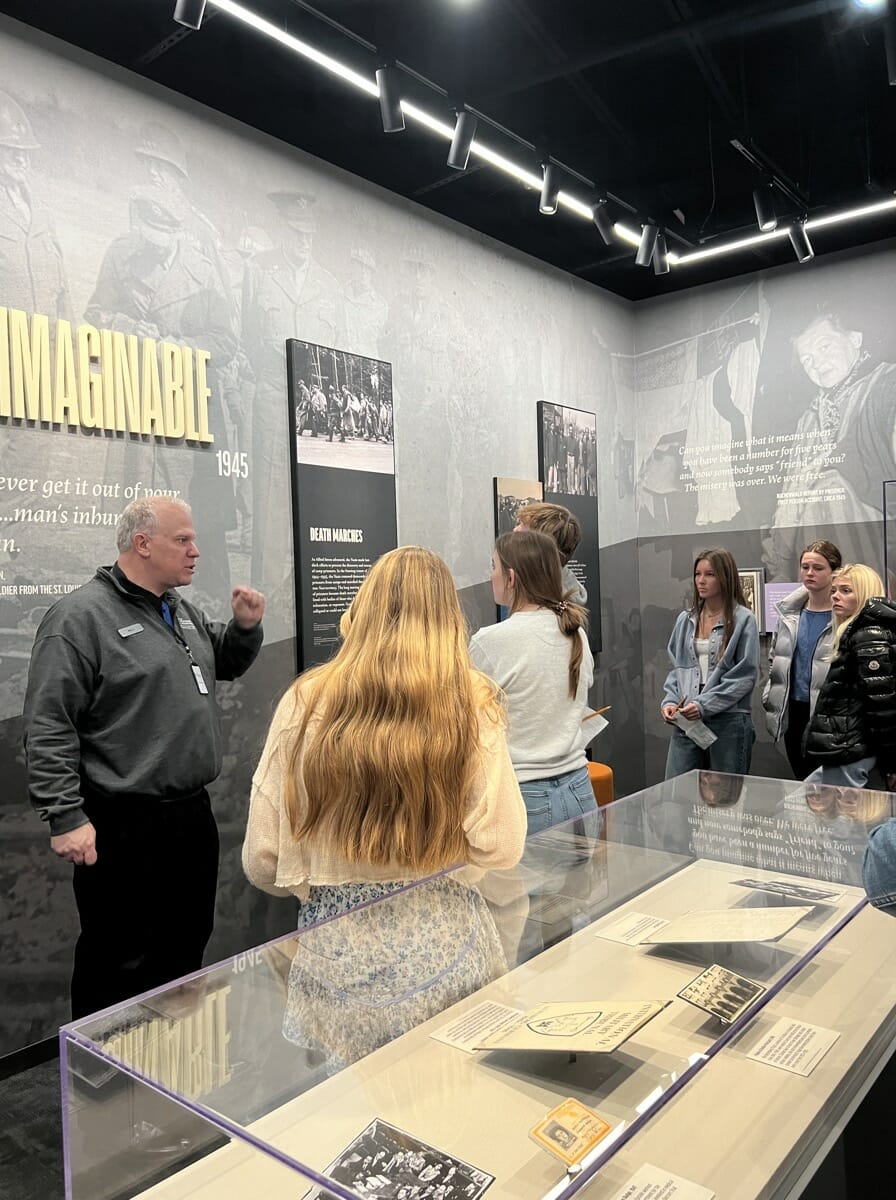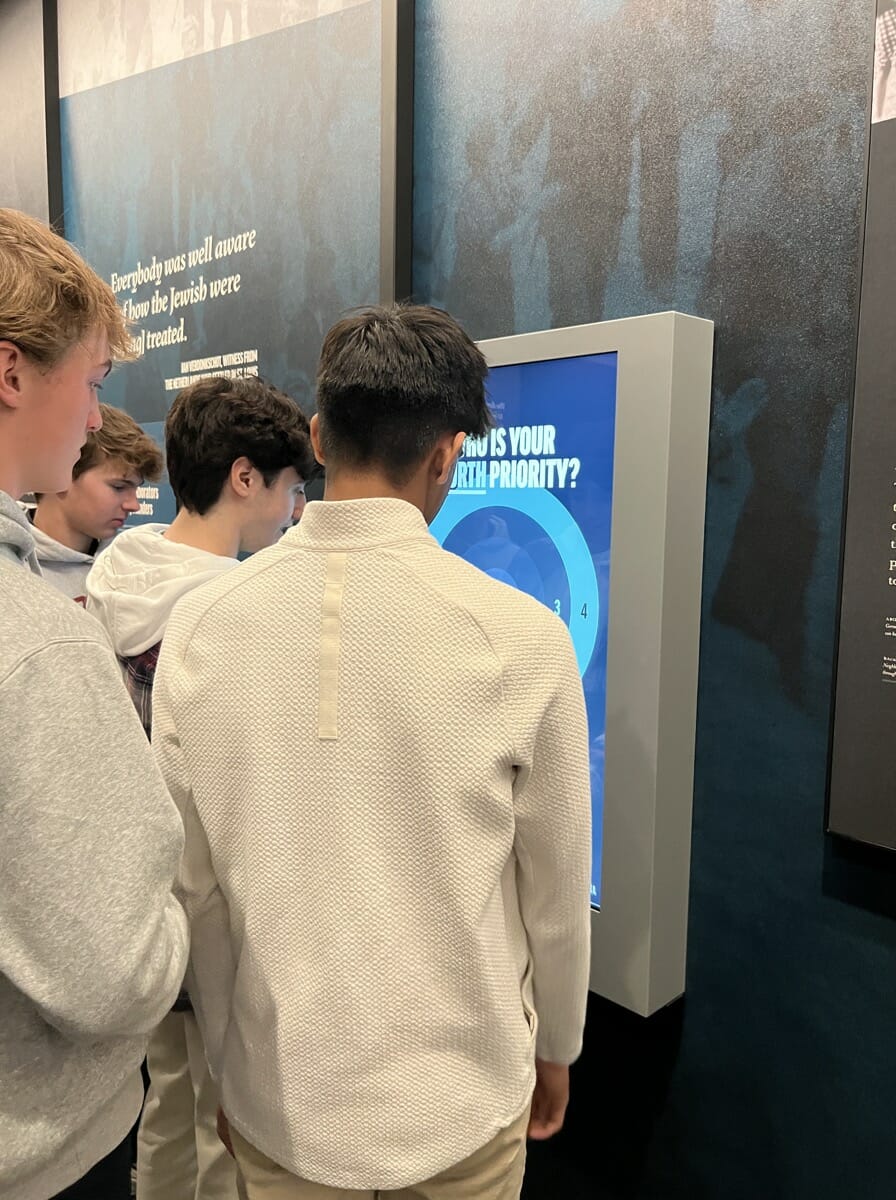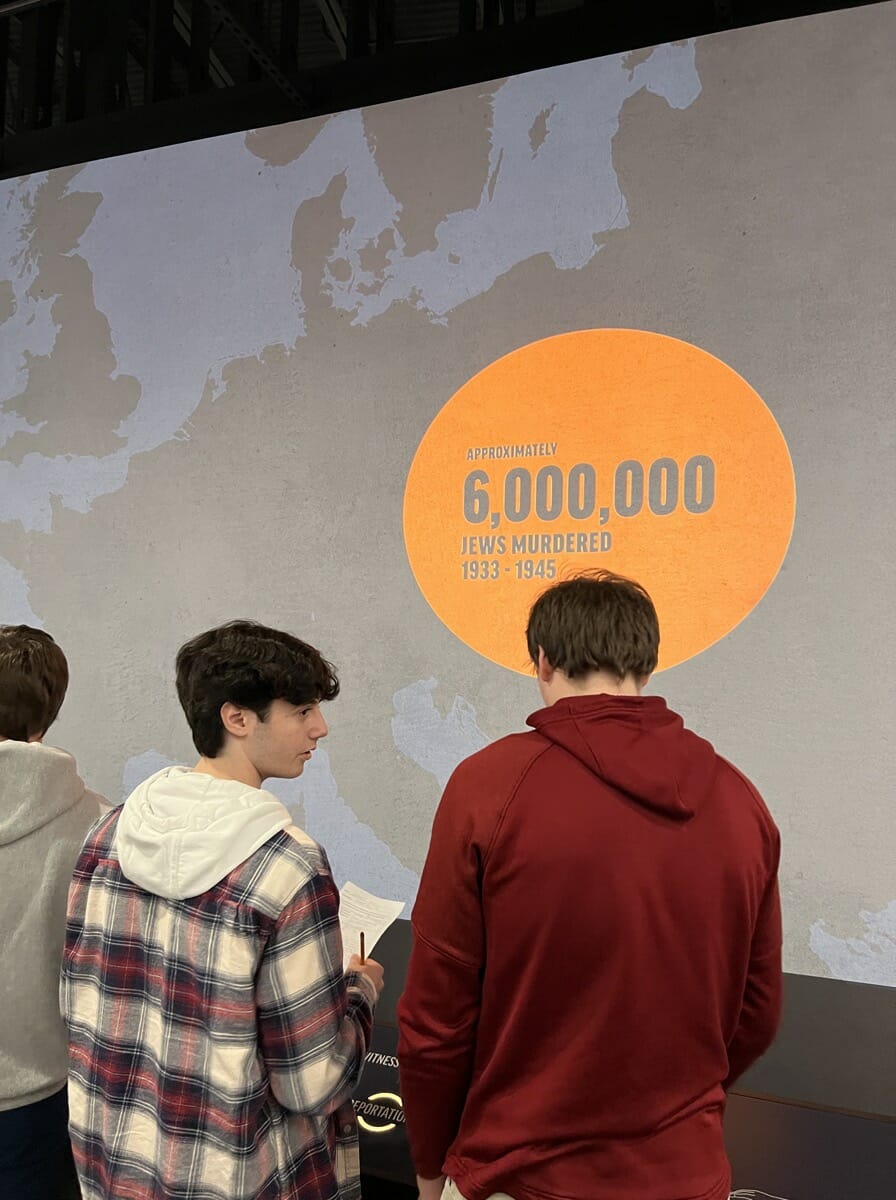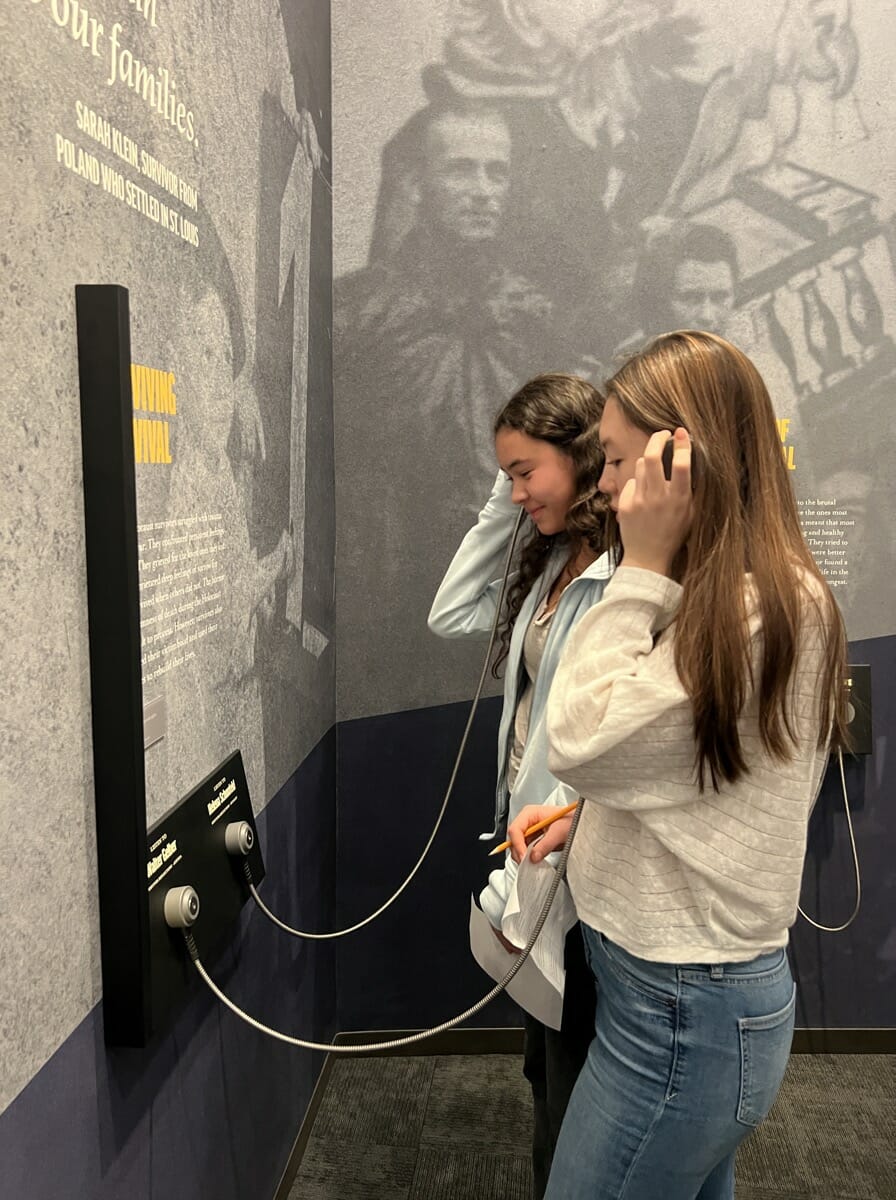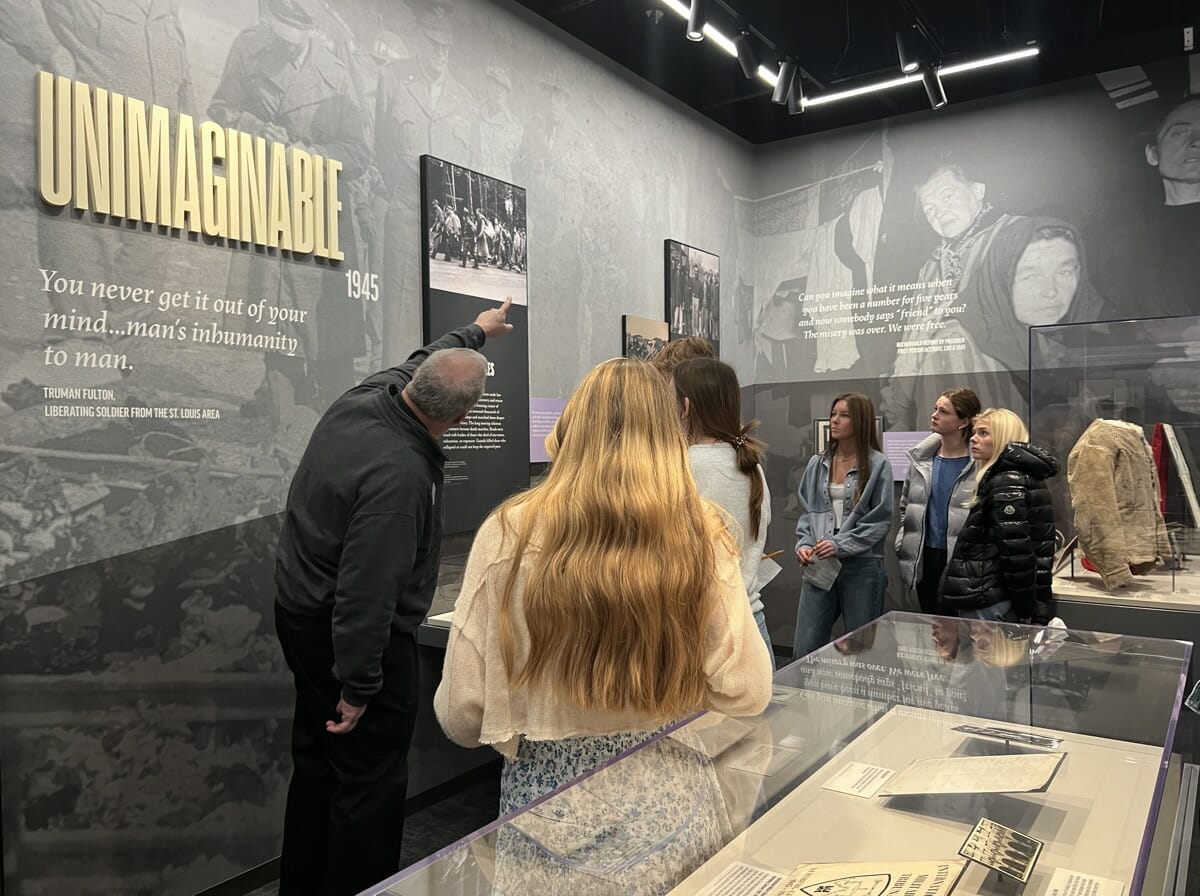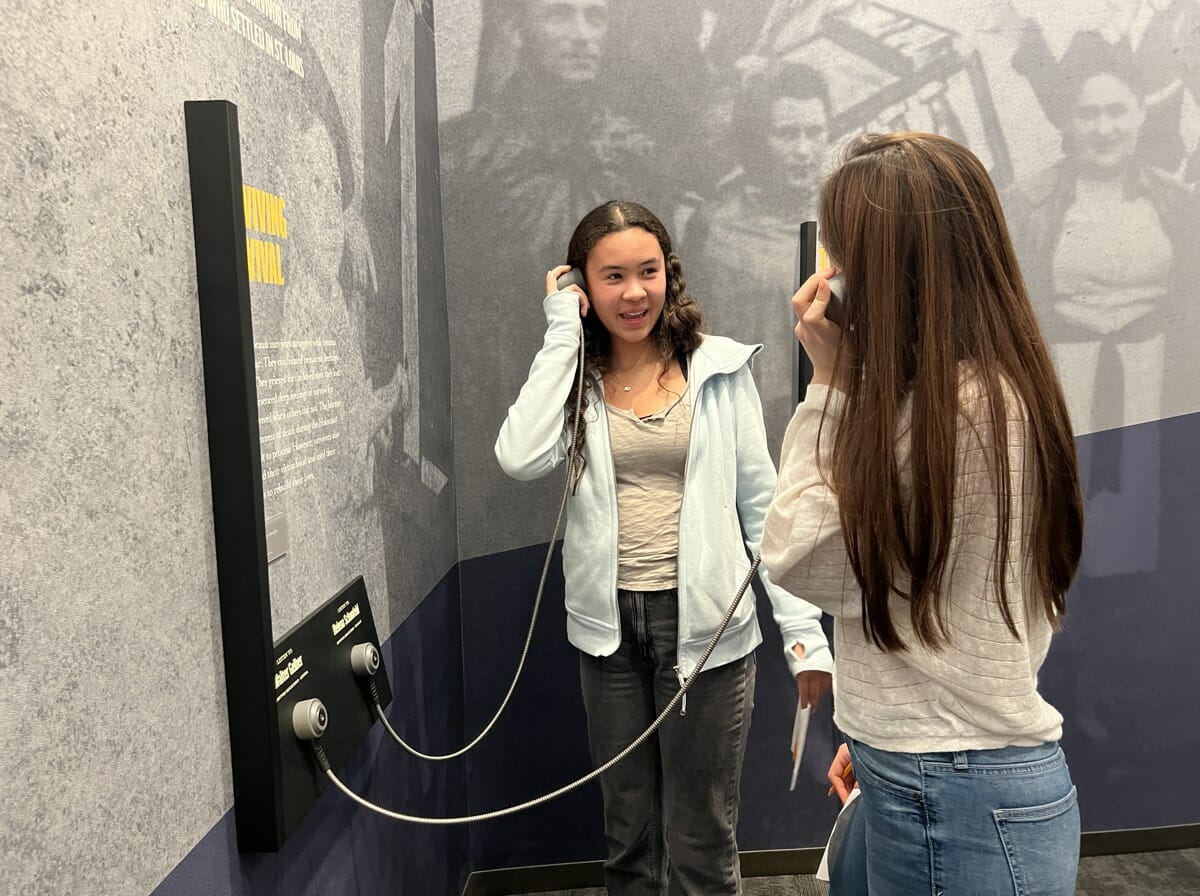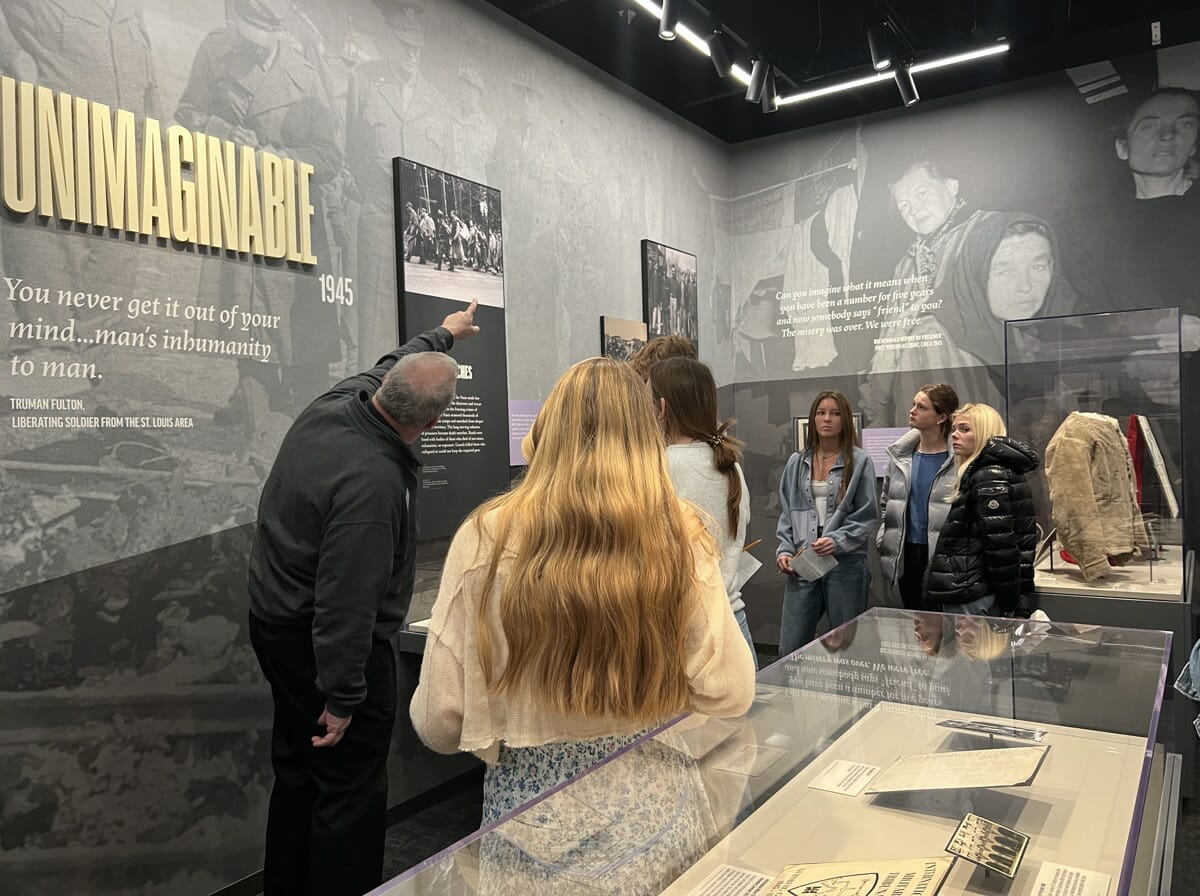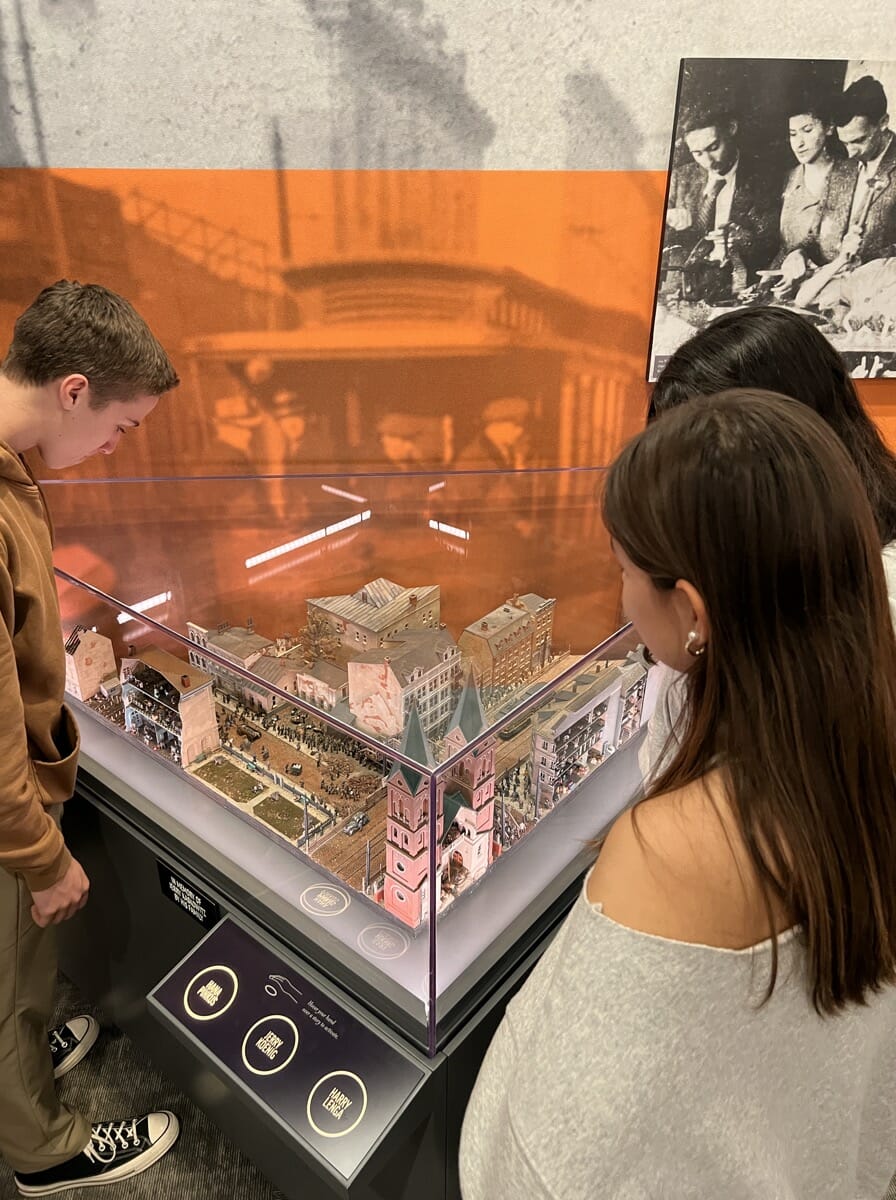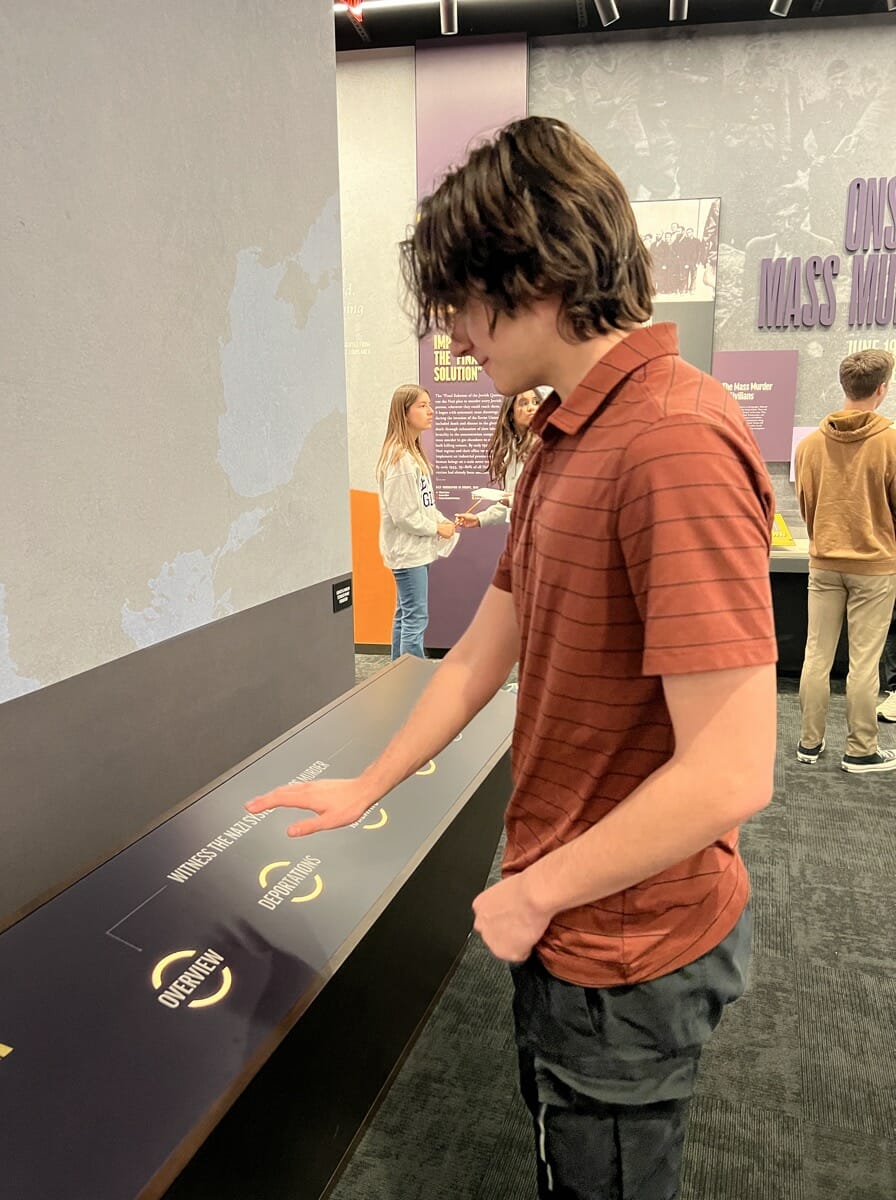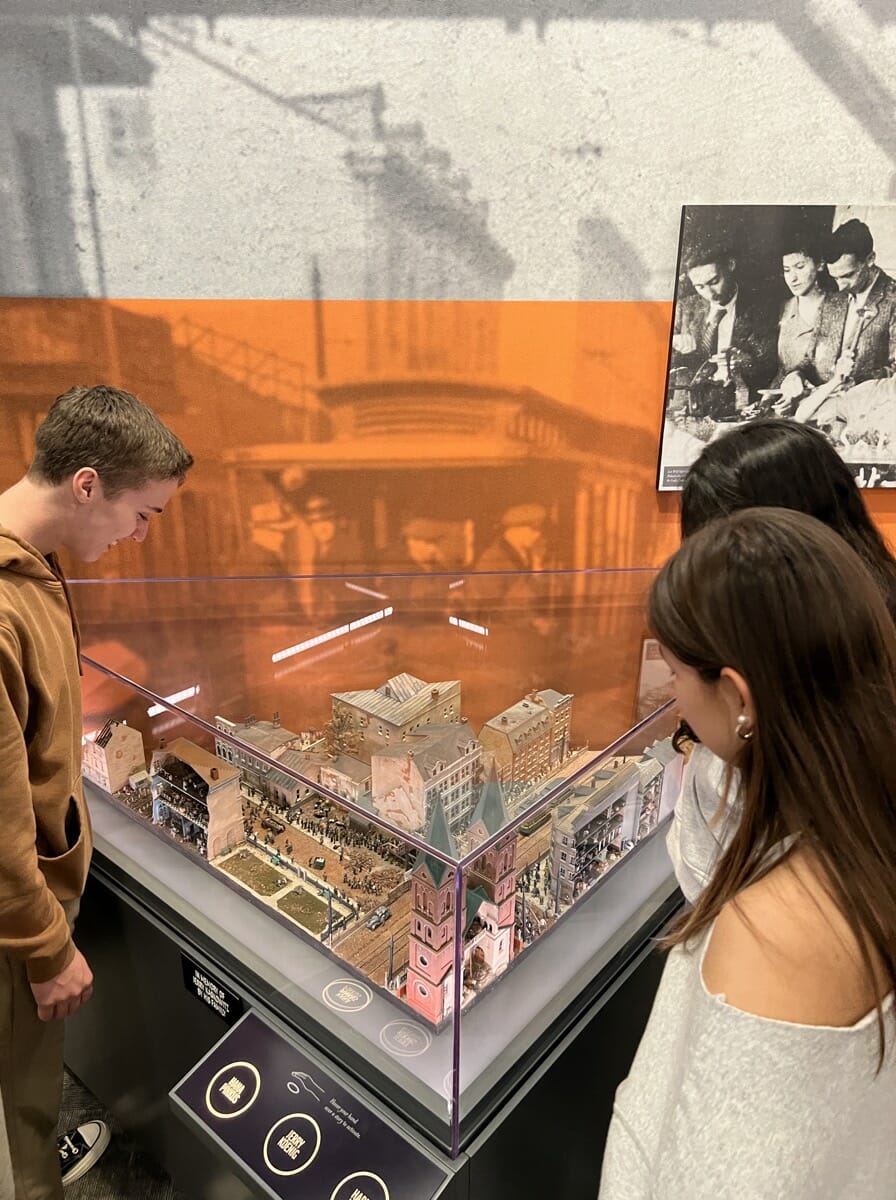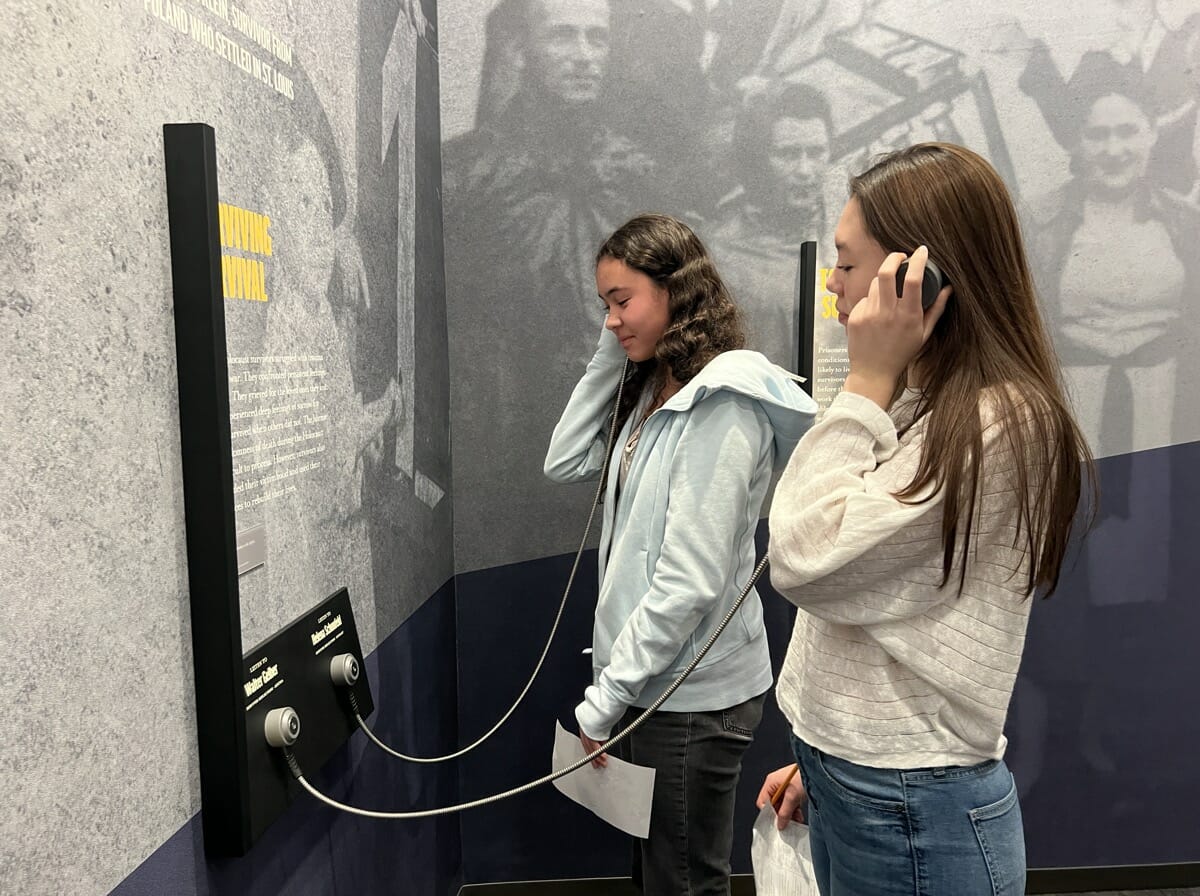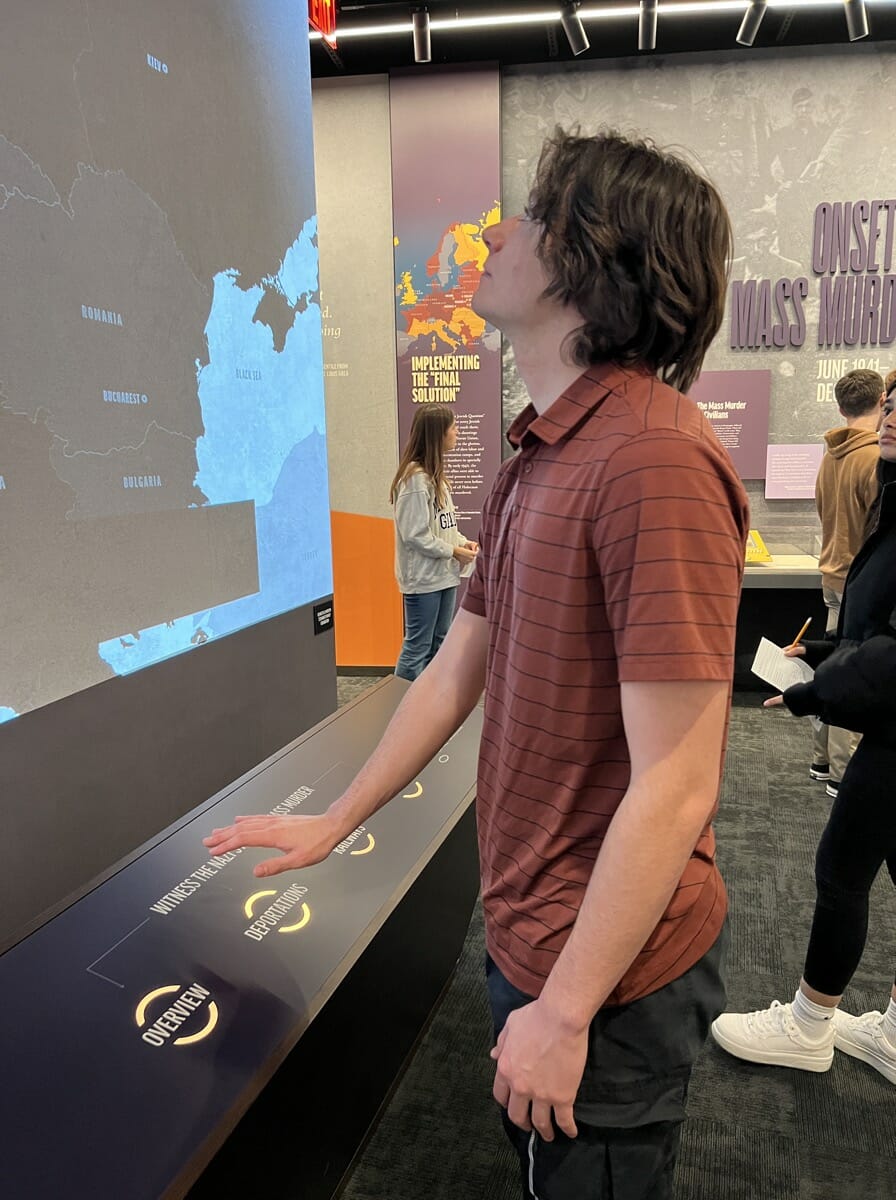Upper School students in the Human Rights and Genocide history elective recently visited the newly-renovated and expanded St. Louis Kaplan Feldman Holocaust Museum to deepen their knowledge and understanding of the Holocaust.
“It’s so easy when studying the Holocaust, to become overwhelmed by the sheer magnitude and numbers, and to lose sight of the individual stories,” said JK-12 History Department Chair and Upper School Teacher Carla Federman. “One of our priorities with this course is to ensure that our students don’t fall into that trap, and that they instead find ways to connect with those stories of tragedy and survival, as well as understand the agency of individuals during WWII. Visiting the newly re-opened Holocaust Museum gave us a remarkable opportunity to build on our classroom experiences and emphasize the importance of remembering the past while also recognizing our own ability to impact the present.”
Because the visit coincided with the end of a month-long unit on the Holocaust, students were given the freedom to explore the museum’s exhibits on their own. Docents were available to answer questions and add information as students interacted with the exhibits on the dismantling of democracy, the build-up to WWII, the Holocaust itself, and the stories of liberation. The museum provided an informative timeline of the Holocaust as well as insight and connection to the personal stories of victims and survivors of this period of history. Following their time in the exhibits, students heard directly from Linda Koenig, whose late husband Jerry was a survivor who, with his immediate family, escaped from the Warsaw Ghetto and lived in an underground hiding space with 11 people for 22 months. Ms. Koenig also shared compelling video clips of Jerry telling his story.
MICDS students appreciated the opportunity to visit the exhibits and learn more. Connor Paine ’24 said, “I think the whole experience is something that everyone must experience. Most people will not be exposed to a museum of this quality that shows the horrors of what went on, and when you do not see the people who were impacted by the Holocaust, it is easy to forget that six million people is not just a statistic, it is six million victims of a crime, and six million stories that we are unable to see. So this museum gives a very good way of showing the human perspective of the survivors, and helps show people almost 100 years later, that this event is something that happened, and still impacts people today.” Isabel Philips ’24 added, “The trip to the Holocaust Museum was an insightful experience, and I was able to better visualize what we have been learning in class. I appreciated how the volunteer workers were dedicated to ensuring we made a connection with the interactive exhibit, and there were many primary documents, objects, and survivor stories that deepened my understanding of the Holocaust.”
Upper School History Teacher Max Campbell said, “The visit to the museum was particularly impactful as we approach the conclusion of our Holocaust unit. Students had the opportunity to engage with artifacts, personal stories, and interactive exhibits that brought the themes and essential questions we have been exploring to life. The museum’s intentional focus on stories connected to St. Louis and Missouri helped further connect the experiences and horrors of the Holocaust to the world students live in today. It’s hard not to start feeling closer to this history after spending time with family memorabilia and personal documents of people who went on to live in our communities.”
We share our deepest gratitude to the St. Louis Holocaust Museum for providing a wealth of exhibits, programs, and personal accounts of survivors which offer a unique opportunity for our students and teachers to learn from those who lived it.

